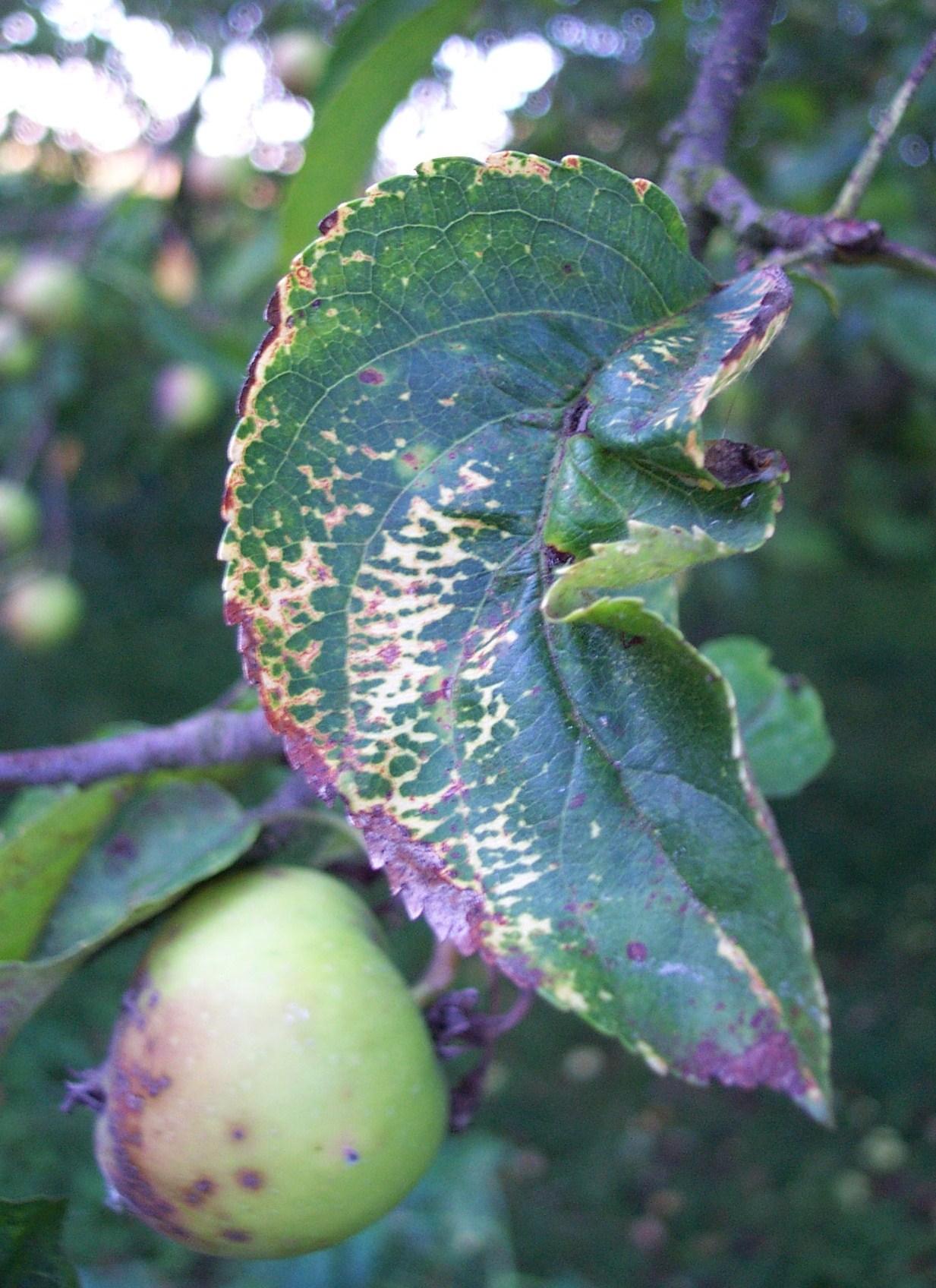
Apple mosaic
Ilarvirus
What is Apple Mosaic (Ilarvirus)?
Apple mosaic is a plant disease caused by multiple viruses, including Apple mosaic virus (ApMV) and Tulare apple mosaic virus (TAMV), which are primarily transmitted by aphids. Infected apple varieties develop pale yellow or white spots that turn brown, creating mosaic patterns on leaves, which may drop prematurely. This disease is widespread in apple-growing regions globally, with severe symptoms commonly observed in Golden Delicious, Granny Smith, and Jonathan apple varieties.
How does Apple Mosaic (Ilarvirus) occur?
Aphids are the primary transmission method for some viruses, such as Apple mosaic virus (ApMV), the primary transmission routes for other apple mosaic viruses can indeed include root grafting and infected propagation equipment. These viruses reproduce by entering host plant cells, replicating their RNA genome, and assembling new virus particles. They then spread within the plant through cell-to-cell movement and systemic spread, resulting in the characteristic symptoms of apple mosaic disease.
Symptoms
1 - Plant health
ApMV can cause symptoms such as mosaic patterns on leaves, stunting, distorted growth, and reduced fruit quality. These effects can weaken infected plants and impair their overall vigor.
2 - Yield reduction
Infected plants may experience reduced fruit yield, lower quality fruit, or complete crop loss, depending on the severity of the infection.
3 - Economic impact
The presence of ApMV can result in economic losses for farmers and orchard owners due to reduced marketable yield and the need for disease management measures.
Solutions
1 - Prevention and Control Measures
• Use virus-free plants obtained from reputable suppliers. • Practice good sanitation by disinfecting tools and equipment. • Remove and destroy infected trees to prevent further spread. • Implement pest control measures to manage insect vectors. • Monitor orchards regularly for early detection and prompt removal of infected trees. • Avoid planting apple trees in areas where infected trees were previously present.
2 - Cultural Practices
• Practice crop rotation to reduce the risk of reinfection. • Implement proper pruning techniques to promote tree health. • Ensure proper irrigation and nutrition to maintain tree vigor. • Create proper spacing between trees to improve airflow and reduce disease pressure.
4 - Genetic Resistance and Rootstock Selection
• Select apple varieties that are less sensitive to apple mosaic viruses. • Use resistant rootstocks that provide tolerance or resistance to viruses. • Consult with experts or extension services for information on virus-resistant varieties and rootstocks. • Consider genetic testing or screening of planting material for virus-free status.
